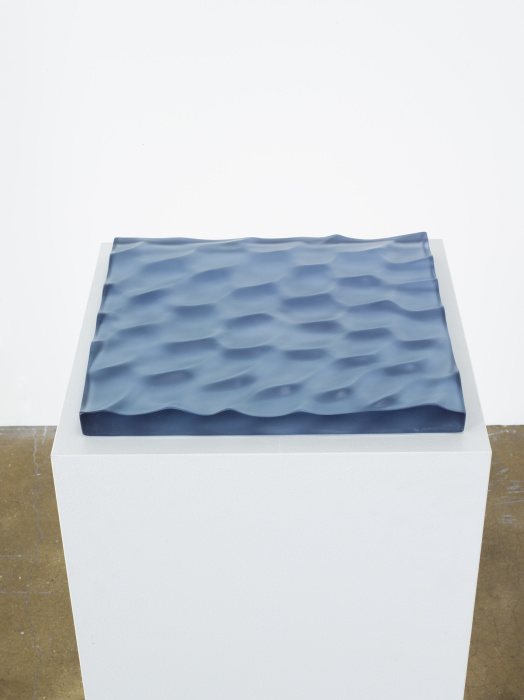Maya Lin critically engages with notions of site and place, exploring the development of systems in order to reflect on the environment, creating objects that invite contemplation—intellectual, sensorial, and physical—of the natural world.
Lin’s creative inclinations were encouraged from a young age and she spent much of her childhood in her father’s ceramics studio. She went on to study architecture and sculpture at Yale University, New Haven, Connecticut, earning a bachelor’s degree in 1981. Lin was thrust into the spotlight after winning a nationwide design competition for the Vietnam Veterans Memorial in Washington, D.C. (1982). Informed by Robert Smithson’s earthworks and Richard Serra’s Minimalist sculpture, Lin’s memorial design was recognized with an Honor Award as well as a Henry Bacon Memorial Award from the American Institute of Architects in 1984, the same year she participated in her first group exhibition at Sidney Janis Gallery, New York.
Alongside commissions to design monuments for the Civil Rights Memorial in Montgomery, Alabama (1989), and the Women’s Table for Yale University (1995), Lin pursued her art practice through the creation of site-specific sculpture and earthworks. Comprised of mounds of recycled broken safety glass, Groundswell (1993) was created for the artist’s first solo exhibition, Public/Private, held at the Wexner Center for the Arts, Columbus, Ohio, in 1994, and was a response to its surrounding architecture. Further engaging with architectural space, The Wave Field (1995), like Lin’s earlier topological production, is comprised of shaped earth, and evokes the dynamics of water. It was created for the University of Michigan, Ann Arbor, and is the first in a series of Wave Field works.
Lin’s longstanding environmental advocacy and her fascination with maps led her to begin exploring water as a precious resource in 2007, charting birds-eye views of major bodies of water such as the Hudson, Thames, and Yangtze rivers. These wall works, drawings, and large-scale sculptures have been produced using materials including recycled silver, glass marbles, and custom-made stainless-steel pins. Through her extensive historical and ecological research, Lin’s investigations of bodies of water led her to create the multi-sited and expansive project What Is Missing? (2009–), her final—albeit ongoing—memorial, which serves to raise awareness of environmental degradation and the biodiversity crisis. The recipient of awards from the National Endowment for the Arts (1988, 2007), Lin was also honored with the National Medal of Arts, conferred by President Barack Obama in 2009, and later the Presidential Medal of Freedom in 2016, for her significant contributions to art, architecture, and environmental activism. Extending on her investigations of land use and natural bodies of water, Lin created the site-specific work A River Is a Drawing organized with The Hudson River Museum, Yonkers, New York in 2018. In 2019, Lin’s exhibition Flow, organized by the Grand Rapids Art Museum, expanded the site-specificity of her water works to Western Michigan, including The Traces Left Behind (From the Great Bear Lake to the Great Lakes) (2019) a sprawling relief made of recycled silver.
For Lin, the idea of experience, movement, and nature are integral to her work, heightening spatial perception and environmental awareness. Her approach to artmaking often finds its origins in science rather than art, demonstrated in her application of satellite technology and cartographic techniques.
